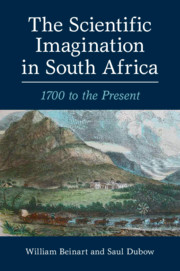Book contents
- The Scientific Imagination in South Africa
- The Scientific Imagination in South Africa
- Copyright page
- Contents
- Map
- Figures
- Acknowledgements
- Introduction: The Scientific Imagination in South Africa
- 1 Scientific Imagination and Local Knowledge at the Cape in the Eighteenth Century
- 2 Scientific Governance and Colonial Institutions, c. 1800–70
- 3 Technological Innovation and the Scientific Imagination in Mining and Agriculture, 1870–1902
- 4 Science, Reconstruction and the Imagining of the First ‘New’ South Africa, 1902–29
- 5 The Commonwealth of Knowledge, 1930–48
- 6 The Republic of Science, 1948–90
- 7 Big Science and Indigenous Knowledge: Post-Apartheid South Africa and the African Renaissance
- Afterword
- Select Bibliography
- Index
4 - Science, Reconstruction and the Imagining of the First ‘New’ South Africa, 1902–29
Published online by Cambridge University Press: 07 May 2021
- The Scientific Imagination in South Africa
- The Scientific Imagination in South Africa
- Copyright page
- Contents
- Map
- Figures
- Acknowledgements
- Introduction: The Scientific Imagination in South Africa
- 1 Scientific Imagination and Local Knowledge at the Cape in the Eighteenth Century
- 2 Scientific Governance and Colonial Institutions, c. 1800–70
- 3 Technological Innovation and the Scientific Imagination in Mining and Agriculture, 1870–1902
- 4 Science, Reconstruction and the Imagining of the First ‘New’ South Africa, 1902–29
- 5 The Commonwealth of Knowledge, 1930–48
- 6 The Republic of Science, 1948–90
- 7 Big Science and Indigenous Knowledge: Post-Apartheid South Africa and the African Renaissance
- Afterword
- Select Bibliography
- Index
Summary
The South African War of 1899–1902 constituted a major political rupture. In the postwar period, science and technology consolidated the embryonic state and legitimated white authority – and racial segregation – by valorising rationality, order and progress. Members of scientific associations helped to build the university system which expanded rapidly after the First World War. The confluence of scientific and industrial expertise in Johannesburg was signalled by the establishment of a South African Institute for Medical Research in 1912. The national Department of Agriculture was a key employer of applied scientists, and veterinary researchers at Onderstepoort tackled a range of animal diseases. Innovative individuals such as Junod, Merensky and Marais advanced entomology, geology and zoology. Jan Smuts and J.H. Hofmeyr were committed to active participation in the emergent Commonwealth, viewing science as a means to transcend differences between English- and Afrikaans-speakers. In the 1920s and 30s both became strong advocates of the ‘South Africanisation’ of science and of research in the southern hemispheres. These included new theories of continental drift developed by Alexander du Toit, as well as remarkable paleontological discoveries indicating South Africa’s importance in the evolution of humankind.
Keywords
- Type
- Chapter
- Information
- The Scientific Imagination in South Africa1700 to the Present, pp. 155 - 206Publisher: Cambridge University PressPrint publication year: 2021

